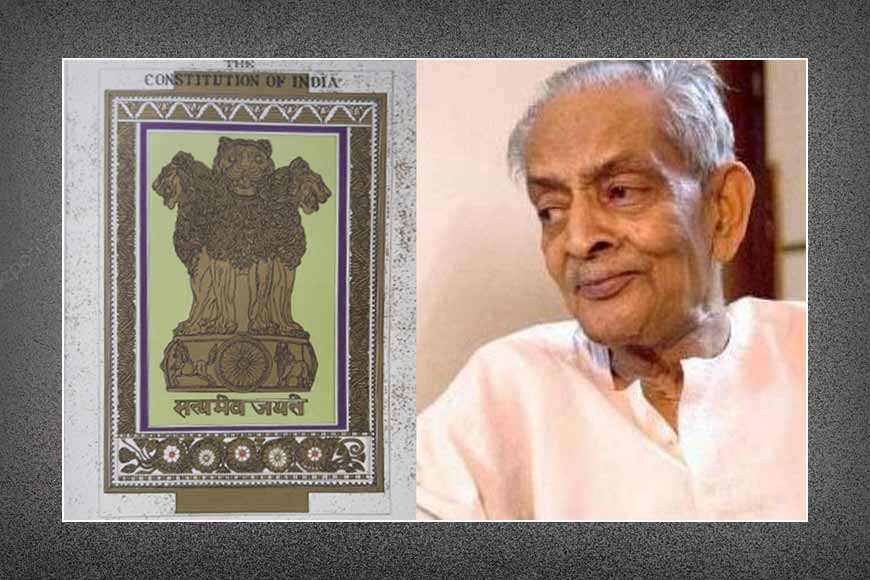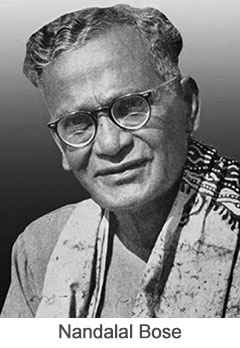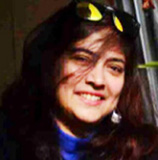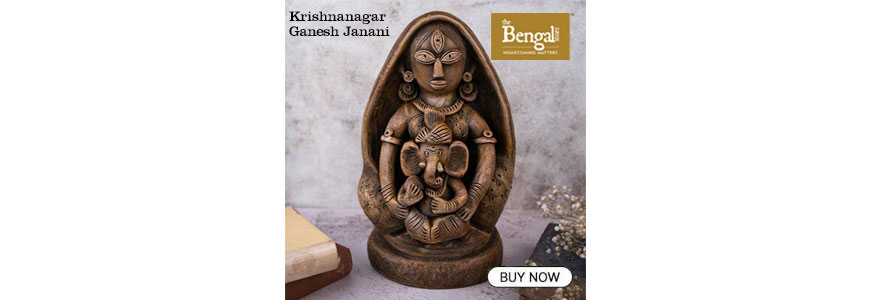The roaring lions in our Nation Emblem

The Lion seems to have left in recent times being the King of the Jungle and instead stepped on to becoming the controversial king of social media. At least the recent controversy on the National Emblem and the face of the lions depicted raise a storm indeed. But decades ago Santiniketan’s famous artist Nandalal Bose had been such a perfectionist in making his student Dinanath Bhargava draw the perfect lion resembling Emperor Ashoka’s depiction of lions on the Ashok Stambha or pillar that he made his student travel to the Kolkata Zoo daily to observe a live lion and how it looks and behaves. That was the level of dedication and perfection that Bose followed while designing the Indian Constitution.
Bhargava literally had to travel a hundred kilometres a day braving the crowds, dust and grime of 1940s Kolkata, to study live lions for the design of India’s National Emblem. And this routine continued for more than a month. No wonder the dedication of mentor Bose and his student resulted in the exquisite National Emblem that India is so proud of, the expressions of the lions picture perfect, comparable to the thousands of year old Ashoka Pillar. Incidentally neither Bose nor Bhargava are alive. Bhargava had sketched and illuminated India’s National Emblem, the Lion Capital of Ashoka. His work is also found on the front pages of the original manuscript of the Indian Constitution.
 Born on November 1, 1927, Dinanath Bhargava came from Madhya Pradesh but in pre-independence India he was pursuing a three-year Diploma course in Fine Arts at Santiniketan. It is here that he met his teacher and mentor Nandalal Bose, who was then the Principal of Kala Bhavan. Bose immediately recognized the young man’s talent and while he was choosing his group of art students to help him in designing the pages of the Indian Constitution, he handpicked Bhargava. But out of all the work in the manuscript, drawing the lions was most difficult. Bose was a perfectionist and he had briefed Bhargava that the lions in the emblem need to look exactly like the live ones. For about a month, every day, Bhargava commuted from Santiniketan to the Alipore Zoo, covering a distance of more than 100 km just to study the live lions, their mannerisms, countenance, body language and other moves that would help him draw the lions to perfection.
Born on November 1, 1927, Dinanath Bhargava came from Madhya Pradesh but in pre-independence India he was pursuing a three-year Diploma course in Fine Arts at Santiniketan. It is here that he met his teacher and mentor Nandalal Bose, who was then the Principal of Kala Bhavan. Bose immediately recognized the young man’s talent and while he was choosing his group of art students to help him in designing the pages of the Indian Constitution, he handpicked Bhargava. But out of all the work in the manuscript, drawing the lions was most difficult. Bose was a perfectionist and he had briefed Bhargava that the lions in the emblem need to look exactly like the live ones. For about a month, every day, Bhargava commuted from Santiniketan to the Alipore Zoo, covering a distance of more than 100 km just to study the live lions, their mannerisms, countenance, body language and other moves that would help him draw the lions to perfection.
He had to do regular sketches and only after Bose was finally satisfied with the sketches, that Bhargava was given the task of designing the emblem for the first page of the Constitution. On 26 January 1950, India adopted Bhargava’s design, the Lion Capital of Ashoka, as the National Emblem. A closer look at Bhargava’s painting reveals the replica almost similar to the Sarnath Lion capital, which was erected by Emperor Ashoka in 250 BC. The lions symbolize power, courage and confidence – resting on a circular abacus. And their looks reflect this motto, the motto of the National emblem of India. That is why the look of the lions is so important. Nandalal Bose knew that, and hence unlike the artists of today, he gave so much importance on their facial expressions, rather than their ferocity.
Bose also gave Bhargava the responsibility of decorating the first 30 pages of the Constitution’s first copy. The responsibility of the other pages were given to other artists in the group who were all students of Bose. Pencil and brush were used by Bhargava for illustrations in those pages along with constitution written in gold calligraphic text. Other than using colours made from stones to illuminate the text beautifully, the artists also used a spray of gold (prepared by mixing pure gold powder with wild-gum and babul) to touch up the pages. Each design drew inspiration from traditional Indian folk art, something that Bose himself specialized in at Tagore’s abode.
Though Bhargava is no more alive, he had told media in one of his previous interviews : “I never saw a complete version of the manuscript as each time a section of the volume was complete, Nandalal Babu would send the copy to Delhi. I finally saw it in 2006 at the Lalit Kala Akademi.” Even in his last days Bhargava remembered Nandalal Bose and the immense influence he had on him. He most vakued and even treasured his painting, ‘Splendour of the Moon’ that his teacher Nandalal Bose had signed for him, congratulating his work. Now with the controversy surrounding the newly erected National Emblem, one wonders if only teachers like Nandalal Bose was alive, may be we would have got a perfect version of the Emblem and not a distorted one. It’s true that beauty lies in the eye of the beholder, yet one must remember a replica needs to be perfect, else it beats the original purpose.










